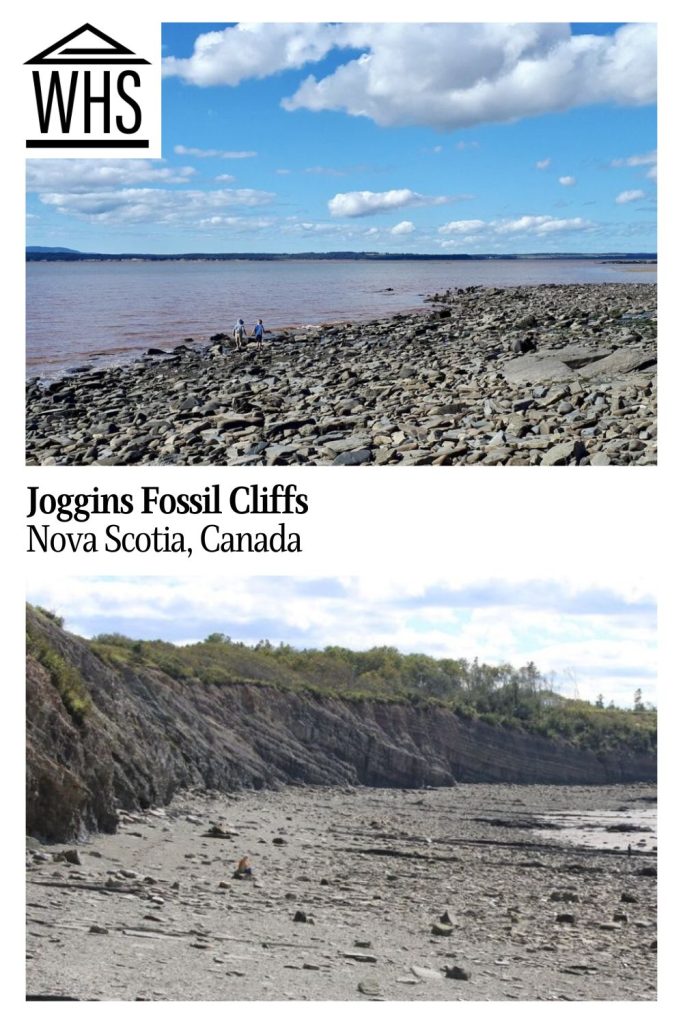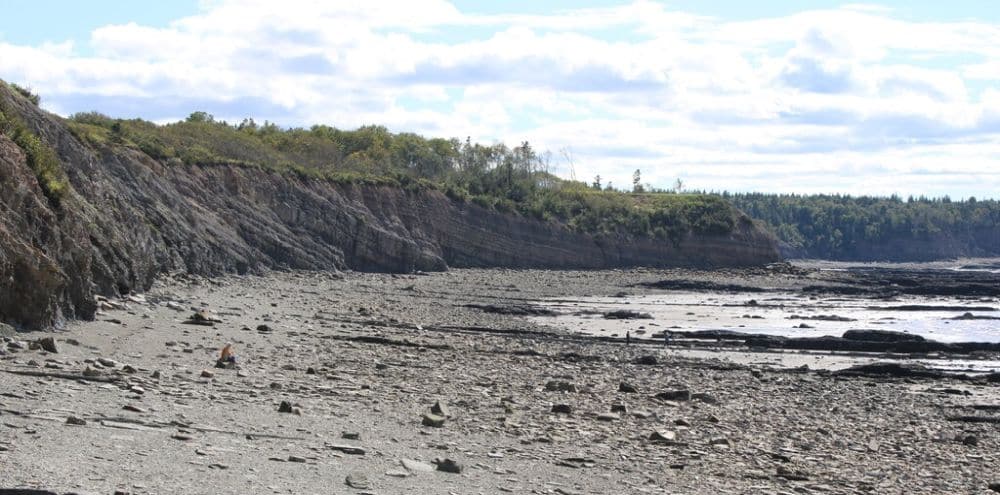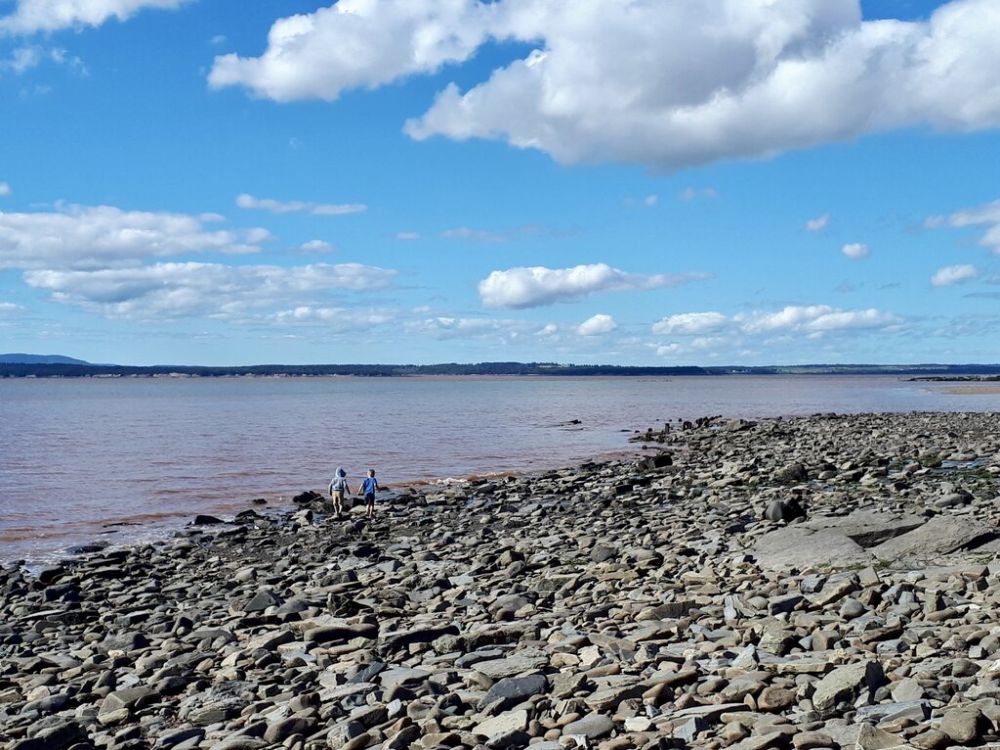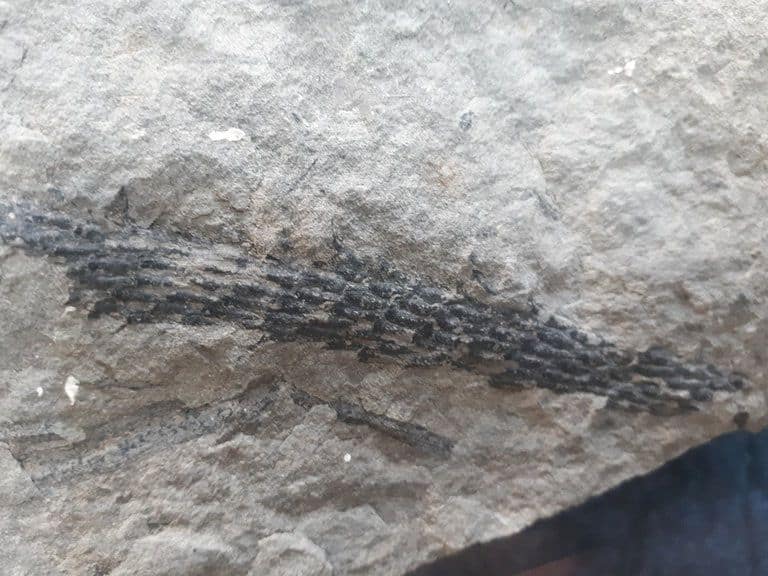Joggins Fossil Cliffs
By Erin
What is Joggins Fossil Cliffs?
Joggins Fossil Cliffs is a 14.7-km (9.1 mi) stretch of dramatic coastline along the Bay of Fundy in Nova Scotia, Canada. Known as the “Coal Age Galápagos,” it’s one of the world’s most important fossil sites, where you can literally walk along the beach and see fossils embedded in the cliffs. To make the most of your visit, plan to go at low tide so you can walk right down on the ocean floor.
The site lets you see what life looked like here 300 million years ago, when this area was a tropical forest. At low tide, you can walk along several kilometres of beach and explore the exposed rock face and fossilized tree trunks, footprints, and other remains from the Carboniferous Period. There’s also a visitor centre with exhibits that explain the history and significance of the site.

Disclosure: This article contains affiliate links. Making a purchase through an affiliate link will mean a small commission for this website. This will not affect your price. Privacy policy.
Why is Joggins Fossil Cliffs a UNESCO World Heritage Site?
Joggins Fossil Cliffs earned UNESCO World Heritage status because it contains “the most complete fossil record of terrestrial life in the Coal Age.” The site offers an unmatched look at how plants and animals lived 300 million years ago, including rare fossils of early reptiles – some of the first animals to walk on land.
In short, Joggins provides scientists with a unique snapshot of Earth’s history and the evolution of life on land.

What can you expect on a visit to Joggins Fossil Cliffs?
A visit to Joggins offers a look back in time. The highlight is walking right on the ocean floor at low tide, where the Bay of Fundy – home to the highest tides in the world – has revealed layers of rock packed with fossils. You can see fossilized tree stumps still standing upright, plant impressions in the shale, and if you look closely, the occasional small fossil or footprint.
Start your visit at the visitor centre, where you’ll find exhibits that explain the geological history of the cliffs, how the fossils formed, and why they’re so important. Guided tours are available, and I highly recommend joining one. The guides are incredibly knowledgeable and will point out details you’d likely miss on your own.
This is a fascinating place to explore because you get to experience science in action. Spend some time wandering the beach, taking photos, and really noticing the details that make this spot so special. My kids loved searching for fossils along the beach and seeing the massive tree fossils up close. It’s a mix of education and adventure that doesn’t feel like a typical museum visit.

Is Joggins worth visiting?
Yes, Joggins Fossil Cliffs is absolutely worth visiting, especially if you’re already exploring Nova Scotia’s Bay of Fundy region. It’s one of many unique things to do in Nova Scotia, especially if you love history and geology.
It’s not the kind of place you’d spend a full day, but plan on at least two to three hours to walk the beach, check out the visitor centre, and take a guided tour if you can. Take the chance to walk on the ocean floor and soak up the Bay of Fundy’s incredible views.
Compare rental car prices here.
If fossils are a particular interest of yours, read about these other UNESCO sites in Canada focused on fossils: Miguasha National Park in Quebec, Mistaken Point in Newfoundland and Dinosaur Provincial Park in Alberta.

Tips for visiting Joggins
Check the tide schedule before you go. Fossil viewing is best at low tide when the ocean floor is fully exposed.
Wear sturdy shoes. The beach can be rocky and slippery in places.
Join a tour. The guides know where to find the most impressive fossils.
Do not collect any fossils to take home unless you have a Heritage Research Permit, which is issued by the Nova Scotia government.
Pair your visit with other nearby stops; Advocate Harbour, Cape Chignecto, or a drive to Hopewell Rocks in New Brunswick make great additions to your itinerary. In addition, Nova Scotia has two other UNESCO sites: Old Town Lunenburg and Landscape of Grand-Pré.
Where is Joggins Fossil Cliffs?
Joggins Fossil Cliffs is located in Joggins, Nova Scotia, along the Bay of Fundy. It’s about 40 minutes (35 km/22 mi) from Amherst and just under 2 hours from Moncton, New Brunswick. There’s free parking available at the visitor centre.
Book accommodations near Joggins Fossil Cliffs.
Public transportation options are limited, so driving is the easiest way to visit. From Halifax, it’s about a 2.5-hour drive. Book accommodations in Halifax.
For more information about Joggins Fossil Cliffs, its opening hours and admission fees, see the official website here.
Have you been to Joggins Fossil Cliffs? If so, do you have any additional information or advice about this UNESCO World Heritage site? Please add your comments below!

